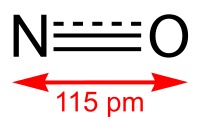
Photo from wikipedia
Nitric Oxide (NO) is a free radical with numerous critical signaling roles in vertebrate physiology. Similar to mammals, in the teleost system the generation of sufficient amounts of NO is… Click to show full abstract
Nitric Oxide (NO) is a free radical with numerous critical signaling roles in vertebrate physiology. Similar to mammals, in the teleost system the generation of sufficient amounts of NO is critical for the physiological function of the cardiovascular system. At the same time, NO amounts are strictly controlled and kept within basal levels to protect cells from NO toxicity. Changes in oxygen tension highly influence NO bioavailability and can modulate the mechanisms involved in maintaining the NO balance. While NO production and signaling appears to have general similarities with mammalian systems, the wide range of environmental adaptations made by fish, particularly with regards to differing oxygen availabilities in aquatic habitats, creates a foundation for a variety of in vivo models characterized by different implications of NO production and signaling. In this review, we present the biology of NO in the teleost cardiovascular system and summarize the mechanisms of NO production and signaling with a special emphasis on the role of globin proteins in NO metabolism.
Journal Title: Antioxidants
Year Published: 2022
Link to full text (if available)
Share on Social Media: Sign Up to like & get
recommendations!